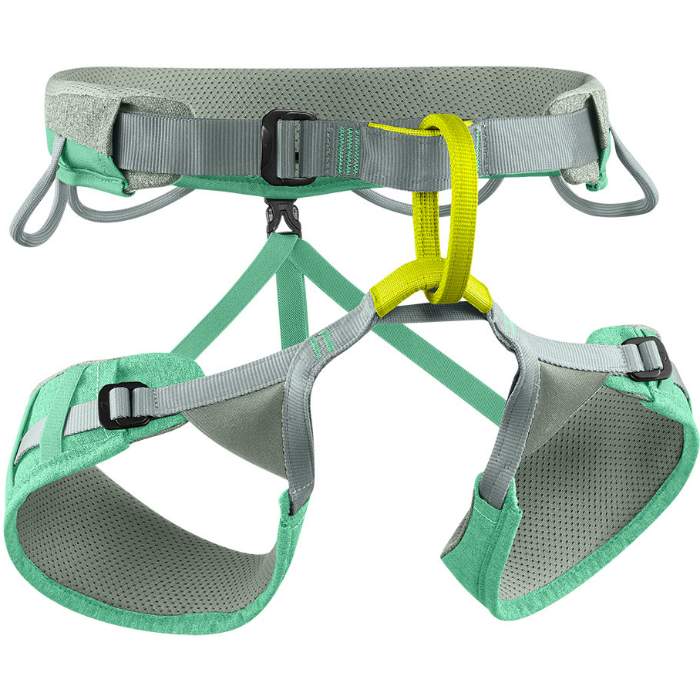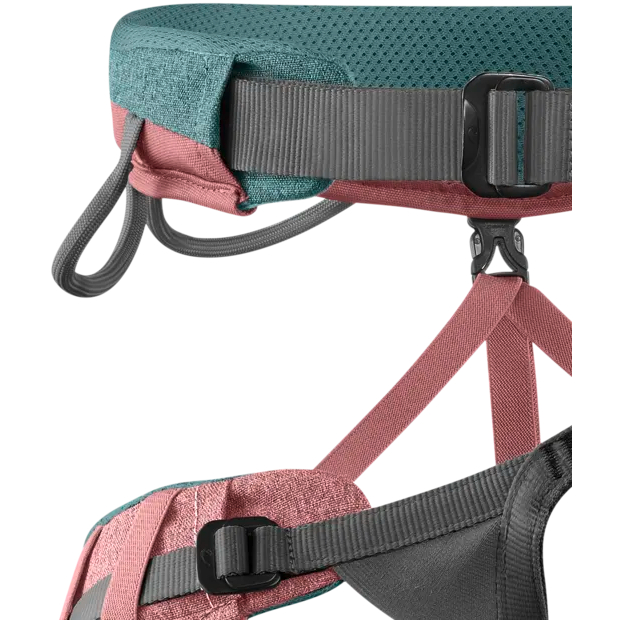Sizing Chart for all Mens, Womens, and Childrens Harnesses
Jayne III
Description
An all-round harness specially tailored to the female anatomy with adjustable leg loops and an easy-to-center tie-in point. Suitable for all vertical activities.
- 3D mesh padding for optimal support and comfort
- Abrasion protector for extra durability at tie-in point
- Longer leg loop base enables optimal positioning above the hip bones
- Small pouch on harness to accommodate RFID chip
- Moveable foam waist padding allows the tie-in point and the four fixed gear loops to be centred and aligned
Retail price
When you click a link below and then checkout online, no matter what you buy (climbing gear or not), we get a small commission that helps us keep this site up-to-date. Thanks!
Weight (g)  WeightIn grams, the weight, as stated by the manufacturer/brand. If there are differences in weight (due to multiple sizes or optional accessories) we'll list them here. The default weight is the middle-most size, often this is size M. | 407 g XS : 360 g / 12.6 oz |
| Fit | Women |
| Sizes | XS, S, M, L, XL |
Gear Loops  Number of Gear LoopsGear loops are used to hold gear (quickdraws, cams, etc) onto your harness. 4 gear loops is most common. 
0 - 1 Gear LoopsMost often on full body harnesses or guide/gym style harnesses. 2-3 Gear LoopsMostly found on lighter harnesses made for [ski] mountaineering or high-end sport climbing where weight is a high priority. 4 - 5 Gear LoopsThe standard/most common number for climbing harnesses. Perfect for sport and trad. More Than 6 Gear LoopsDesigned for long multi-pitch and big wall climbing, found on harnesses made to hold the maximum amount of gear. Worth ConsideringOccasionally, the number of gear loops will change on a harness model depending on the size. There could be 7 gear loops for the med/large but only 5 gear loops for the xsmall/small. In this case we list the highest number for the filters, and then write an explanation on the product page like, “Size S/XS can only fit 5 gear loops.” | 4 Gear loops |
Ice Clip Slots  Ice Clip SlotIce clipper slots are made to fit a carabiner that holds ice screws. These slots are generally only used by ice climbers but there is no disadvantage to having them on your harness. 
Less than 40% of harnesses will have ice clipper slots. And those harnesses will usually have 2 or 4 slots, often located next to, or between, the gear loops. | No, 0 |
| Belay / Tie-In | One Loop |
| Waist Buckle Type | Quick Adjust |
| Leg Buckle Type | Quick Adjust |
| Drop Seat | Yes |
Haul Loop  Haul LoopTrad climbers often look for a haul loop as they're intended to haul a rope (second line) or pack (while you climb the chimney). 
A haul loop can also hold shoes or other accessories. Although not the intended use, it is also commonly used to hold a chalk bag. | Yes (0kN) |
| Certification | CE |
| Size Chart | XS |
No reviews yet.
There is nothing wrong with Edelrid Jayne, but it didn't stand out enough in any one particular way to win an award in our review. It is comfortable and fairly versatile though, and may just be the perfect fit for you!
Probably the biggest update, again per Edelrid, is that the Jay/Jayne 3 harnesses are all bluesign products, aligned with the company’s sustainability efforts. Christopher Terrell, a rep for Edelrid, says the process “involves 89% less water, 62% less carbon emissions, 63% less energy, and 63% less chemicals in the process of dyeing the textiles.”
How to use Edelrid Harness, safety, lifespan, storage and care with instructional pictures.
A pictoral representation of UIAA-105 and EN-12277 standards for harnesses.
The UIAA equipment standard provides a baseline for equipment performance in a test lab under controlled conditions on new equipment. Although these test conditions are relevant to the conditions encountered climbing, conditions encountered at the crags and the condition of the equipment are equally important. This recommendation from the UIAA member federation The British Mountaineering Council (BMC) provides vital equipment information that is NOT explicitly addressed in the standard, particularly failure modes of the equipment and recommendations for the use, inspection, maintenance, and retirement of equipment.


























